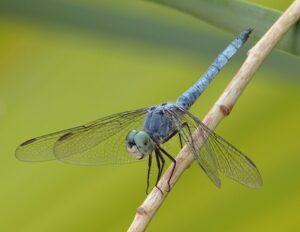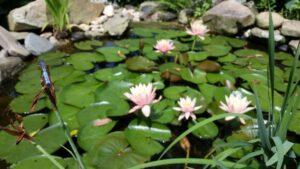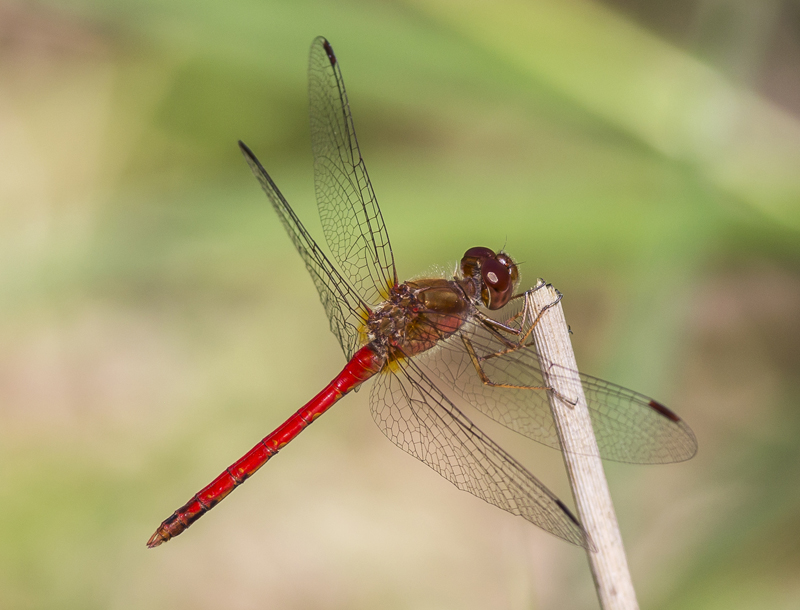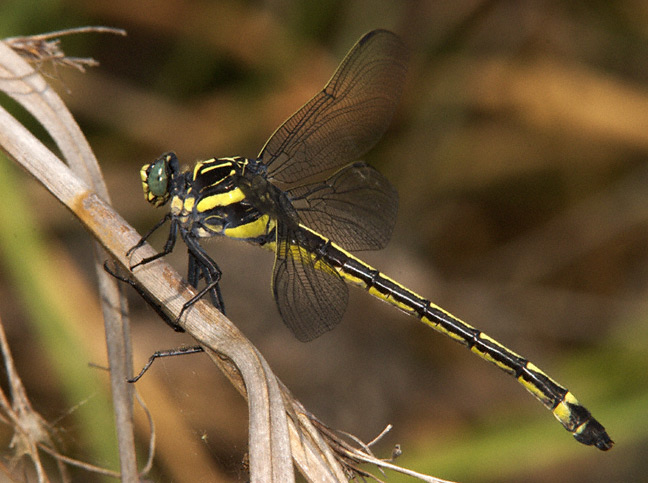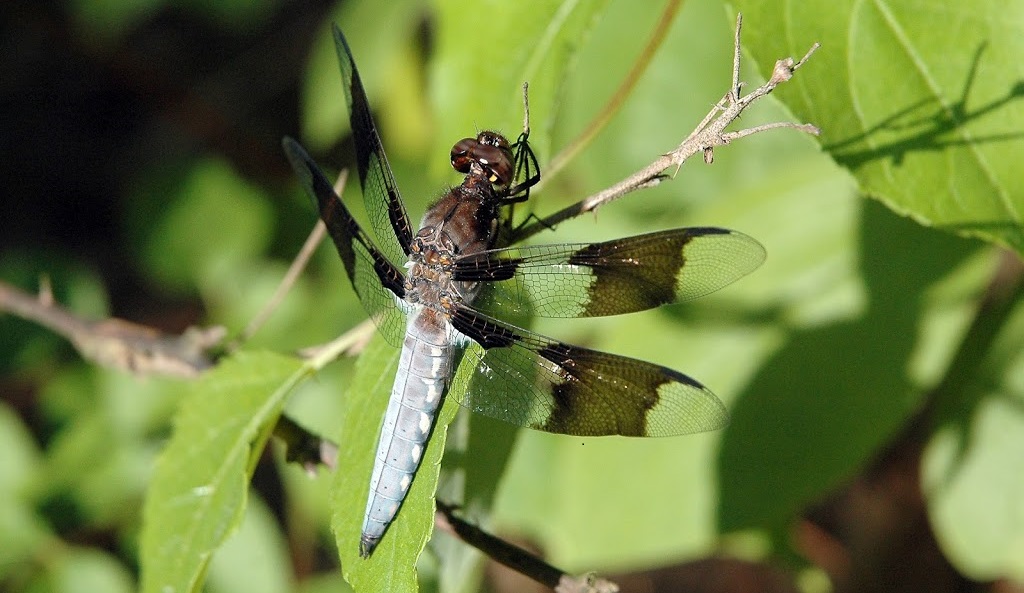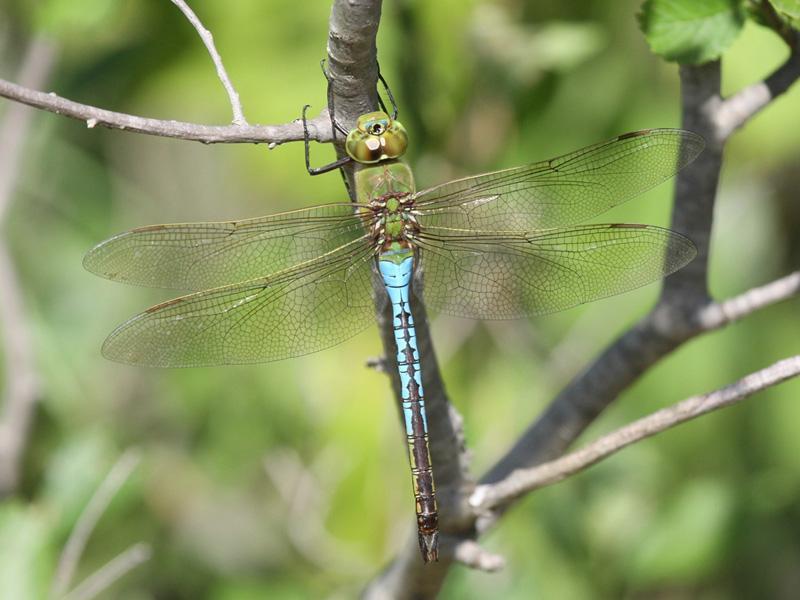Blue Dasher (Pachydiplax longipennis)
Updated on
28/10/2022Blue dashers are one of the most widespread dragonfly species found in the United States. Being the only species under its genus – Pachydiplax, these vibrantly colored dragonflies belong to the skimmer family.
They are also called the swift long-winged skimmer and the blue pirate throughout North America.
Scientific Classification
- Class:Insecta
- Order:Odonata
- Infraorder:Anisoptera
- Family:Libellulidae
- Genus:Pachydiplax
- Species:P. longipennis
Conservation Status
Description and Identification
Naiads
They are small, ranging from 3/4 to 7/8 inch (18 to 21 mm).
Their base body color is bright green with a brownish covering on top. The colors act as excellent camouflage.
On abdominal segments eighth and ninth, there is one backward spine each on both sides. The segments of the ninth abdomen appear a little longer than the previous one.
Adults
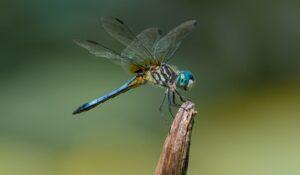
The blue dasher dragonfly is not too big, with lengths varying from 11/8 to 29/16 inches (35 to 45 mm).
Juveniles do not develop their bluish tint until maturation. Their thorax consists of green and yellow stripes. There are also yellow dashes along the side of their abdomen.
Sexual dimorphism is very distinctive among the two genders. Adult males are vibrant blue and have metallic green/turquoise eyes. A yellowish coloration is visible behind their wings on each side of their abdomen. They also have two pairs of clear wings with a couple of dark streaks.
Female blue dashers are not as vibrant and colorful as their male counterparts. They possess a pair of big compound eyes that are divided into two sections: rusty above and bluish-gray below. They have a shorter, brownish, and yellow striped abdomen. Their abdominal tip has a small whitish/pale yellow coloration.
With age, some adult females get somewhat bluish, but their coloration is never as vibrant as the males.
Both genders have whitish faces and yellow stripes on the thorax. An amber cast is visible on the base of their hindwing. A darkish black abdomen tip is present in the species.
Populations of blue dashers present in warmer climates lack the darker wing coloration present in the ones found in cooler regions. The coloration of their wings inhibits factors like- thermoregulation, flight performance, and territorial dominance.
Distribution: Southern British Columbia to parts of Ottawa and Ontario in Canada; Eastern Southern California to Florida and into Mexico; Bahamas, Idaho, and Belize.
Habitat: Lakes, ponds, slow streams, rivers, marshes, and bogs. They prefer still water sources.
Do They Bite/Sting: No, they do not have stingers. They bite only when threatened.
Lifespan: After hatching, the larvae live up to 2 years underwater. After maturing, they can live for several years.
Predators: Frogs, fish, birds, and large spiders.
Conservation Status: Not evaluated
Behavior and Characteristics
Excellent Eyesight
The blue dasher dragonfly has excellent eyesight thanks to its huge compound eyes. These eyes consist of thousands of tiny facets, which provide them a 360° field of vision, which it utilizes to spot and capture their prey after tracking their movement.
Territoriality
Blue dasher males display extreme territorial behavior. They perch themselves atop vegetation around water bodies, protecting their territory from other smaller males. They will flash their blue abdomens( which attract U.V. light) to warn each other.
While displaying territorial aggression, the males raise their abdomen in flight as they approach intruders. The blue dasher flies underneath the enemy chasing and forcing them away from the territory with their abdomen lowered.
Smaller males are usually driven away from breeding grounds by larger blue dasher males. This causes dispersion in the species and growth in their distribution range.
Life Cycle
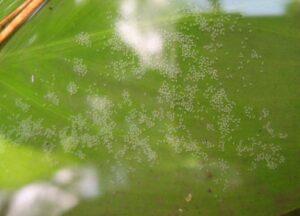
When females are ready to mate, they approach the water surface. They mate mid-air and sometimes while perched; in this case, both males and females close their wings and raise their abdomen. Their mating period can be as short as 2 minutes.
After mating, the female blue dasher flies solo to lay her eggs. They hover above the still water surface as they dip the tip of their abdomen and lay their eggs. This process takes a few seconds.
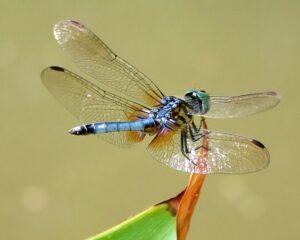
Unless the female strays off too far away from the male’s territory, the latter guards the female to buy her time to oviposit. Males stay on guard throughout the fertilization and egg-laying process to prevent other males from attacking and abducting the female and removing his sperm or the eggs.
The blue dasher dragonflies are a summer species based on the time of emergence of their larvae in the water. They do not all emerge at the same time. In the presence of predators who feed on the larvae, the healthy, stronger larvae have a greater chance of emerging first than compared to weaker larvae.
Conservation
Dragonflies are indicators of a healthy ecosystem. Their presence signifies more greenery, clean air, and richer biodiversities.
Although the larvae are tolerant of poor water quality, severe water contamination in recent years due to pollution and global warming has resulted in them emerging significantly earlier from eggs as larvae. Therefore their survival rate is much lower, as they are also threatened by habitat loss.
Rapid development, industrialization, freshwater loss, and water contamination by pollution/pesticide input and factory wastes are threatening blue dasher populations. The destruction of wetlands has led to a sudden decline in their geographical distribution.
Source
azdragonfly.org, waltersanford.files.wordpress.com, images.fineartamerica.com, i.pinimg.com, dodsonfarm.files.wordpress.com, bugguide.net, images.squarespace-cdn.com, objects.liquidweb.services




